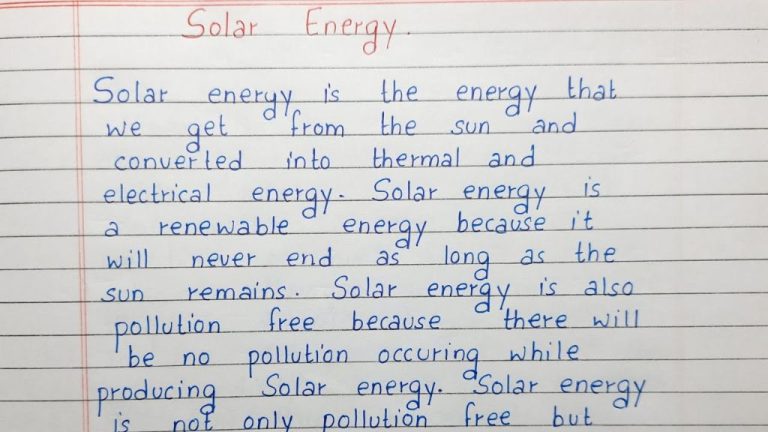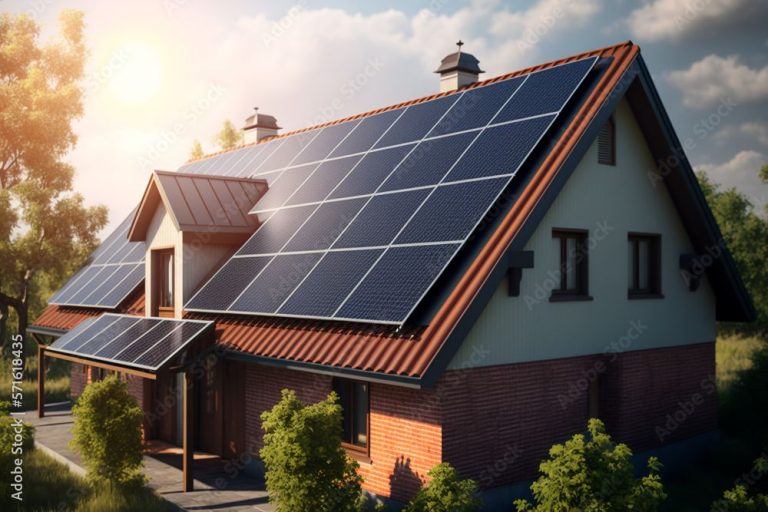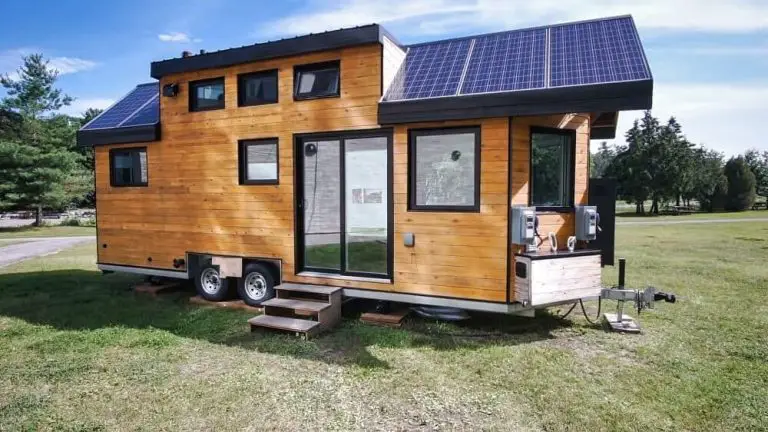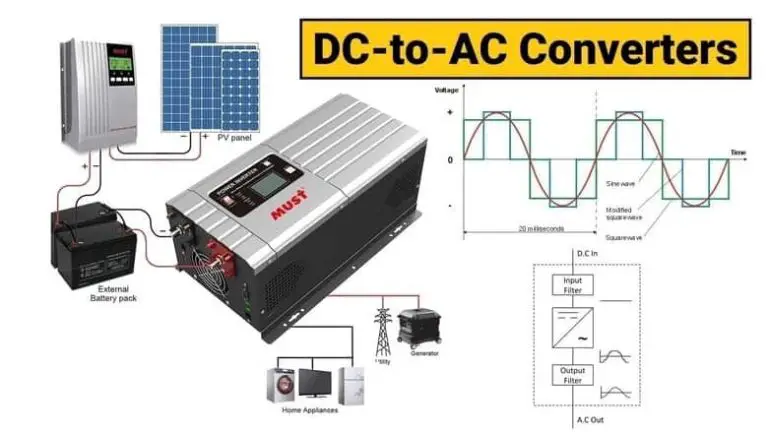What Is A Solar School?
What is a Solar School?
A solar school is an educational facility that utilizes solar power as its primary energy source. Solar schools integrate solar photovoltaic (PV) panels, and sometimes solar thermal systems, to convert sunlight into electricity and heat. The solar energy is used to power lighting, heating/cooling systems, kitchen appliances, computers, internet access, and anything else that requires electricity in the building. Excess solar electricity can even be sold back to the grid.
Solar schools aim to be net-zero buildings that produce as much renewable energy as they consume. They demonstrate the viability and environmental benefits of solar power to students while reducing electricity costs for the school. Solar panels are often installed on rooftops, parking structures, or even as shaded structures over parking lots and play areas. Solar schools may also incorporate other sustainable building features such as natural lighting, green roofs, and smart meters.
The solar school concept combines renewable energy technology with education to provide students with hands-on learning opportunities. Solar energy curriculums and projects can be integrated into science, technology, engineering and math (STEM) classes. Students gain valuable experience with solar installation, monitoring energy production, analyzing performance data, and more. Solar schools empower youth to be leaders in sustainability, renewable energy, and climate solutions.
Benefits of Solar Schools
Solar schools offer a number of benefits compared to traditional school buildings powered by fossil fuels. The most direct benefit is significant energy cost savings from switching to solar power. Solar panels can generate electricity onsite, reducing or even eliminating a school’s electric bill. The cost savings can be substantial given how energy-intensive school buildings tend to be. Funds saved on energy can be redirected towards educational resources, supplies, and programs.
Solar schools also provide unique educational opportunities. Having the solar array directly on campus gives students hands-on experience with renewable energy. Teachers can incorporate the real-world solar power data into math, science, and environmental curriculum and projects. Students can learn about energy production and storage, sparking interest in sustainability and STEM careers.
In addition, solar schools have environmental benefits. Generating clean power from the sun reduces a school’s carbon footprint and reliance on fossil fuels. This sets a positive example and teaches students about environmental stewardship from a young age. The solar panels also have a neutralizing effect on the school’s overall greenhouse gas emissions. Solar energy helps schools minimize their environmental impact as part of their sustainability initiatives.
How Solar Schools Work
Solar schools utilize photovoltaic solar panel systems to convert sunlight into electricity. The solar panels are typically installed on the roof of school buildings, parking structures, or even ground-mounted arrays. The generated electricity powers the school’s facilities and equipment such as lighting, HVAC systems, security systems, kitchen appliances, computers, etc.
Most solar school systems are grid-tied, meaning they are connected to the local utility grid. During the day when the solar panels are generating more electricity than the school is using, the excess electricity is fed back into the utility grid. This is known as net metering. The school receives credits from the utility company for this excess generation, which helps to offset electricity usage at night or on cloudy days when solar production is lower.
At the end of each billing cycle, the school only pays the utility company for their net electricity usage after solar generation credits are applied. This allows schools to reduce their overall electricity bills and provide significant cost savings.
In some areas, schools may even get paid by the utility for their excess solar generation through feed-in tariffs or other incentive programs. The economic benefits of solar energy are a major advantage for schools looking to reduce operational costs and allocate funds to support students and faculty.
Costs and Savings
Installing solar panels at a school is a significant upfront investment, but the long-term savings can make it worthwhile. The upfront costs include purchasing the solar panels, inverters, racking and electrical equipment plus the installation and labor costs. For a typical school installation, this can range from $200,000 to $1 million depending on the size of the system.
However, once the system is installed, the school benefits from electricity cost savings for decades. The return on investment timeline can vary, but is often in the 6-10 year range. After the system has paid for itself through electricity savings, the school enjoys free electricity generation for another 15-20 years – the useful lifespan of a typical solar panel system.
Over a 25 year lifespan, a 500 kW solar system can save a school district over $1 million in energy costs. These long-term savings are the biggest financial benefit to installing solar panels. Additional savings come from avoiding future electricity rate increases, as the cost is fixed after system installation.
Educational Opportunities
Solar schools provide unique educational opportunities for students beyond just powering the facilities. The presence of solar energy systems allows for hands-on learning about renewable energy and sustainability. Teachers can incorporate the real-world solar installation into lesson plans across multiple subjects.
Having an onsite solar system enables students to get direct experience with solar technology and its applications. Science and engineering focused curriculum can use the solar panels to teach core STEM concepts. Students can monitor energy production, conduct experiments, and understand the math and science behind photovoltaics. Some schools even allow students to get involved in maintaining the solar array.
Solar schools also serve as living laboratories for teaching environmental sustainability. Students learn the importance of renewable energy in reducing fossil fuel dependence and mitigating climate change. Lessons in civics, business, and ethics explore how sustainability intersects with social and economic systems. Installations can inspire students towards careers in the green economy.
The hands-on learning solar enables makes abstract concepts tangible. Solar schools empower students to apply classroom principles to real-world systems poised to reshape our energy landscape. The technology serves as an enriching cross-curricular tool for fostering a new generation of sustainability-focused thinkers and doers.
Environmental Impact of Solar Schools
One of the most significant benefits of solar schools is their positive environmental impact. By utilizing clean, renewable solar energy, solar schools greatly reduce their carbon footprint compared to traditional schools powered by fossil fuels.
The average school in the United States produces over 1,500 metric tons of carbon dioxide emissions per year. Solar schools can reduce those emissions by 70% or more by switching to solar electricity. That’s over 1,000 metric tons of greenhouse gas emissions prevented per school, per year.
Solar schools serve as a shining example (pun intended) of clean energy in action for students. Seeing solar panels on their school’s roof and learning how they provide electricity helps instill important values of environmental stewardship in students from a young age.
Solar schools reduce dependence on coal, natural gas, and other polluting sources of energy. They demonstrate to students and communities that a transition to renewable energy is possible, practical, and highly beneficial.
Case Studies
Solar schools provide excellent examples of how renewable energy can transform educational institutions. Here are some notable projects from around the world:
Abo Elementary, New Mexico
This public school in southeastern New Mexico is entirely powered by a 500 kW solar array. The system offsets 100% of the school’s electricity needs and also serves as an outdoor learning lab for students to get hands-on experience with solar energy.
Ladybird Hope Academy, Nigeria
Opened in 2017, this nursery and primary school in rural Nigeria was outfitted with solar panels and batteries, providing electricity for lights, ceiling fans, and other educational needs. The school serves 800 students who previously lacked access to power.
Beijing National Day School, China
With over 5,000 solar panels installed on rooftops and shading structures, this K-12 school generates 670 MWh of clean electricity per year, covering most of its energy usage. Students are able to monitor real-time solar power generation.
These schools demonstrate solar energy’s versatility and educational value across economic and geographic contexts. Well-designed solar school projects can uplift students while reducing environmental impact.
Implementation Challenges
One of the main obstacles to building solar schools is the high initial costs. The upfront investment for solar panels, inverters, wiring, and installation can be significant. Even with projected long-term cost savings, the sticker shock may deter school districts and communities. The lack of tax rebates and incentives for schools can make financing more difficult.
After installation, schools must plan for ongoing maintenance and repairs. Solar panels and inverters may require cleaning, repairs, and eventual replacement over time. Schools need to budget for system upkeep and train staff to perform routine maintenance. Regular inspections by qualified professionals are also recommended.
Gaining support from stakeholders, including educators, parents, students, and community members, is crucial but can prove challenging. Overcoming misconceptions about costs, safety, aesthetics, and complexity takes education and outreach. Building consensus among decision makers about the benefits of solar schools takes time and a persuasive case.
Future Outlook
The future looks bright for solar schools. With climate change and sustainability becoming increasingly important issues, there is massive growth potential for solar schools. Governments around the world are creating incentives and policies to encourage solar adoption in schools. There is also rapid improvement and cost reductions happening in solar panel technology. Several key trends will shape the future landscape for solar schools:
Growth Potential
Only a small fraction of schools globally have adopted solar power. As more school districts learn about the benefits, solar is likely to expand exponentially. Market researchers predict the solar schools market will grow at over 15% annually over the next decade. Key drivers include improving economics, government subsidies, and rising energy costs from traditional sources.
Government Incentives
Governments from the federal to local level are rolling out new incentives for solar schools. These include tax credits, grants, preferential financing, and renewable energy mandates. With society’s emphasis on reducing carbon emissions, governments are likely to continue expanding clean energy incentives for schools.
Technological Improvements
Solar panel efficiency continues to increase while costs keep declining. Emerging technologies like integrated solar roofs and windows will make adoption easier and more cost-effective. Battery storage solutions are also improving, allowing solar schools to offset usage during peak times. These advances will further accelerate the solar school market.
Calls to Action
For those interested in supporting the growth of solar schools, there are several ways to get involved:
Donate to nonprofits that help schools finance and implement solar projects. Some organizations like GRID Alternatives and the Solar Schoolhouse Initiative work directly with schools to make solar more affordable through grants and community assistance.
Advocate for policies and funding mechanisms at the local, state, and national levels that promote solar at K-12 schools. This could include renewable energy tax credits, rebate programs, solar access laws, and net metering policies. Getting involved with solar advocacy groups is a great way to support the cause.
Volunteer with organizations that install solar systems at schools. Volunteers can assist with tasks like fundraising, community outreach, installation, and maintenance. This hands-on work helps improve access to solar power.
If you work in solar, offer discounted products and services to educational institutions. Some companies donate a portion of regular sales or offer in-kind donations to schools as part of their corporate social responsibility.
For schools interested in going solar, start by researching financing options, available rebates and tax incentives, and the policies in your area. Connect with solar organizations that have experience with K-12 projects. Planning takes time, but the energy savings and educational value make it worthwhile.







